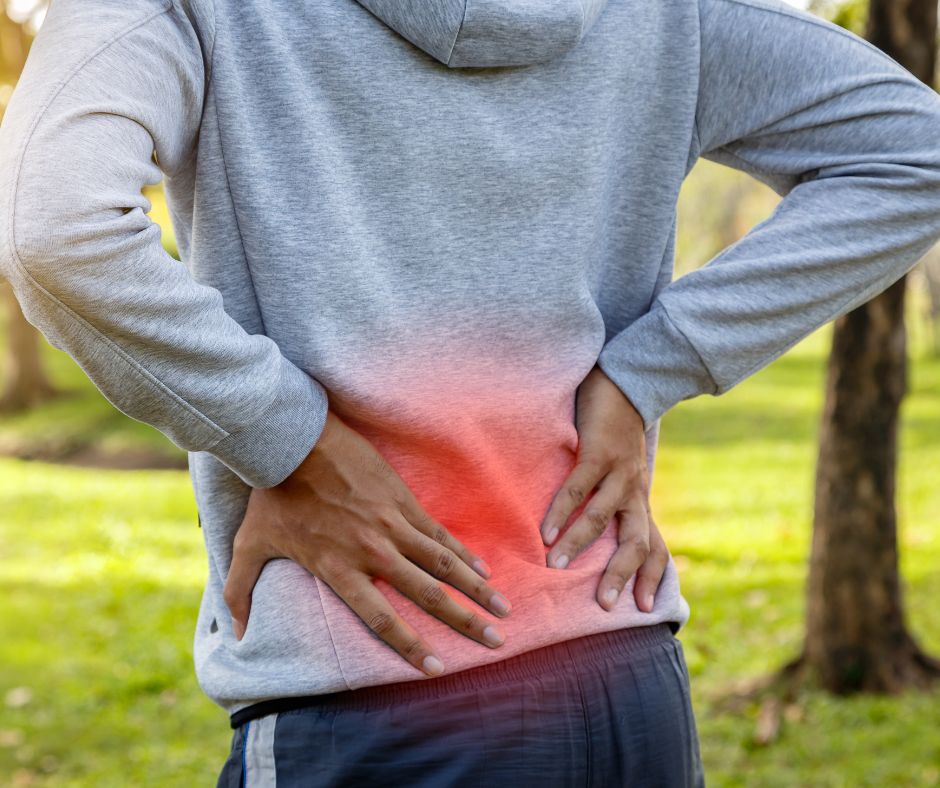Lower back pain? common lower back injuries in runners
Lower back pain is an extremely common complaint in new runners. Our modern lifestyle often works against us. Too many hours sitting at a computer and so many labour saving devices have taken a toll on our posture. Lower back pain in runners tends to be either muscle-related or joint related.
Commun Lower back muscles problems
When it comes to your lower back muscles, it’s all about core strength, and the coordination of your legs. When you run, your core muscles have to work hard to support your spine and lower back, while your hips, glutes, and hamstrings have to work together to keep you stable. When one muscle or a group of muscles becomes fatigued, your lower back has to work harder to keep you upright and on your feet, which can cause pain or injury. One of the lower back areas more affected when running is your sacroiliac joint.
Anatomy of Sacroiliac Joint
One of the most common lower back complaints is sacro-iliac (SI) joint irritation. It can be very debilitating if it affects a recreational runner. The purpose of your SI joints is to provide stability. It connects the bottom of your spine, known as the sacrum, to your pelvis. The two SI joints form where the hip bones meet the sacrum.
How to identify Sacroiliac Joint Irritation
Symptoms : You may feel pain around the thigh, buttock and lower back. There is often localised swelling and puffiness at the site of the joint itself. The pain becomes noticeable when running uphill, whilst using the stairs, or moving from a sitting to standing position. You may also experience pain or discomfort if you have been sitting for prolonged periods of time.
Causes: There are a variety of possible causes for this condition. Often it is a result of imbalances and postural issues. For example, a difference in leg length or muscle imbalances can set it off. In some instances, poor foot posture will put pressure on the knees that can create weaknesses and fatigue to hamstring and gluteal muscles. Also, excess weight or running on uneven surfaces can have a negative impact.
Prevention: Stretching, yoga and exercise can help to improve flexibility and strength in this area. Manual therapies such as osteopathy, physiotherapy and massage, can help to relieve pain and strengthen muscles around the SI joint.
Treatment: Initially you need to rest. If there is inflammation, both anti-inflammatory medication and heat/cold treatment (properly applied) can help. Once the worst of the pain is over, it actually helps to do gentle stretches and exercises. These should be supervised by a professional therapist who can guide you through the proper techniques and principles. If the pain persists, you should see a doctor, as in the worst cases, surgery may be necessary.
Final Word
Completing a marathon is a major achievement. It does however, put the body under a certain amount of stress. It can take up to a month or two for the body to fully rehabilitate afterwards. It makes sense to give yourself every chance of being fighting fit and healthy at the end of it all. If you are experiencing problems with your Sacroiliac Joint our osteo, physios or Sports therapist at Perea Clinic would be more than happy to guide you through the proper process of recuperation. This can include appropriate massage, good nutrition and further guided stretches and exercises.
We hope this information is useful for you. If you need advice or have any questions about our treatments, please contact us. You can find us in Mill Hill Broadway and Islington. We are always happy to help. If you like this blog, please share!



